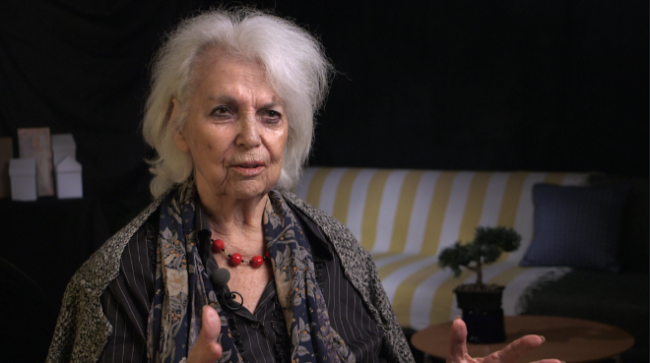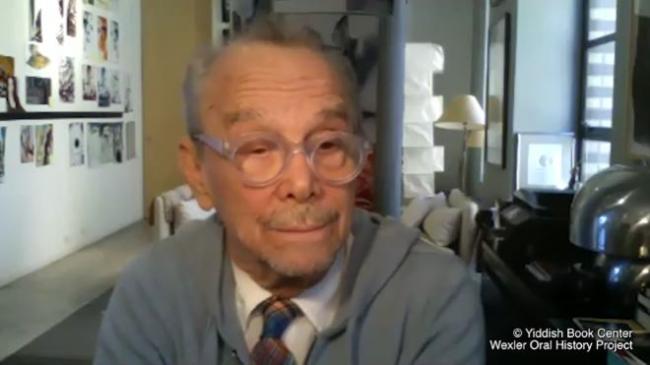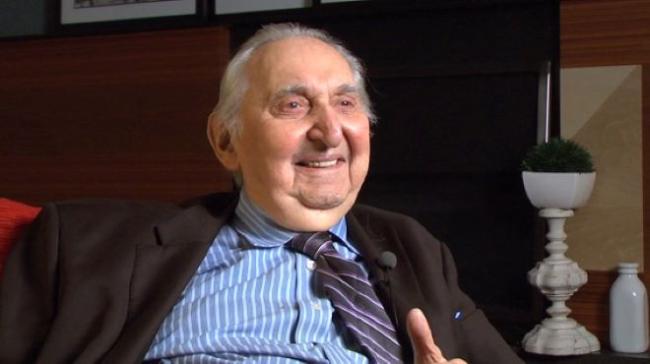Weekly Reader: Yiddish in American Theater and Film
As we noted last week, May is American Jewish Heritage Month (you can see our dedicated page on the subject here), a time to take note of Jewish contributions to American culture. And if there’s one area where Jews contributed greatly, it’s theater and film. Jewish involvement in Broadway and Hollywood is something of a stereotype, but that association didn’t come out of nowhere. Underlying and preceding Jewish participation in the entertainment industry was the Yiddish theater, with its own constellation of writers, directors, producers, and stars. Some Jewish actors got their start in Yiddish theater before eventually making the jump to the English-language stage and screen. Others foster fond memories of going to see Yiddish plays as children before eventually pursuing creative careers as adults. Here we’ll explore some of those connections, both the immediate and the indirect. For a more in-depth exploration of Yiddish theater, be sure to come see our new permanent exhibition, Yiddish: A Global Culture.
—Ezra Glinter, Senior Staff Writer and Editor
American Dynasty

Few families had as great an impact on American theater as did the Adlers. Jacob Adler, one of the most storied Yiddish theater stars, became famous for playing the title character in Jacob Gordin’s The Yiddish King Lear and later for his role as Shylock in The Merchant of Venice, which he performed both on Second Avenue and on Broadway. His wife, Sara, was similarly renowned as an actress, becoming known as the “mother” of Yiddish theater. Their daughter, Stella, after getting her own start on the Yiddish stage, went on to found the Stella Adler Studio of Acting, where she trained future stars such as Marlon Brando, Robert De Niro, Warren Beatty, and Elaine Stritch. And while Stella was arguably the most influential member of the clan, five of her siblings also became actors, playing their own part in what was practically a family business.
Watch an oral history interview with Stella Adler’s daughter, Ellen Adler Oppenheim
Crossover Star

Jacob Adler was among the first Yiddish actors to make the jump to English-language theater, but he wasn’t the last. One of the most successful crossover stars was Molly Picon, who is probably best known for her role as Yente in the 1971 film adaptation of Fiddler on the Roof. Long before that, however, she had already made her mark as one of the most popular actresses on the Yiddish stage, the host of several radio shows, a performer on Broadway, and opposite Frank Sinatra in 1963’s Come Blow Your Horn.
Tevye Goes Home

Speaking of Fiddler, it’s hard to imagine a more iconic example of the interplay between Yiddish and American entertainment. Since beginning its life as a series of stories by Sholem Aleichem, Fiddler became a beloved (and sometimes criticized) Broadway musical, a film adaptation, and most recently a Yiddish-language version of the original play. If you’re looking to explore the source material, we’ve got you covered. There have been several quality English translations of the Tevye stories, but here they are in the original Yiddish.
Read Sholem Aleichem’s Tevye the Milkman
Watch an oral history interview with Joel Grey, director of the Yiddish Fiddler on the Roof
Serious Yiddish

You might think that the Yiddish influence on Hollywood has waned over the years, and in truth it has. But it still pops up here and there, often in unexpected ways. In 2009 I was astounded to see the all-Yiddish opening scene to the Coen Brothers’ movie A Serious Man, which featured two contemporary Yiddish actors, Yelena Shmulenson and Allen Lewis Rickman, as well as the late, great Fyvush Finkel. And if you’re wondering how that scene came to be, we talked to Rickman to find out.
Listen to an episode of The Shmooze podcast with Allen Lewis Rickman
Behind the Scenery

While performers tend to get the lion’s share of the credit (as performers often do), the influence of the Yiddish theater could crop up both behind the scenes and in the scenery. Boris Aronson was one of the greatest of Broadway set designers, winning the Tony Award no less than six times. (Boris’s wife, Lisa Aronson, with whom he collaborated closely, got less of the credit.) He also got his start in Yiddish theater, especially with Maurice Schwartz’s Yiddish Art Theatre. A more recent example is Dina Harris, a playwright and costume designer who got her start working for the National Yiddish Theatre Folksbiene.
Watch an oral history interview with Boris and Lisa Aronson’s son, Marc Aronson
